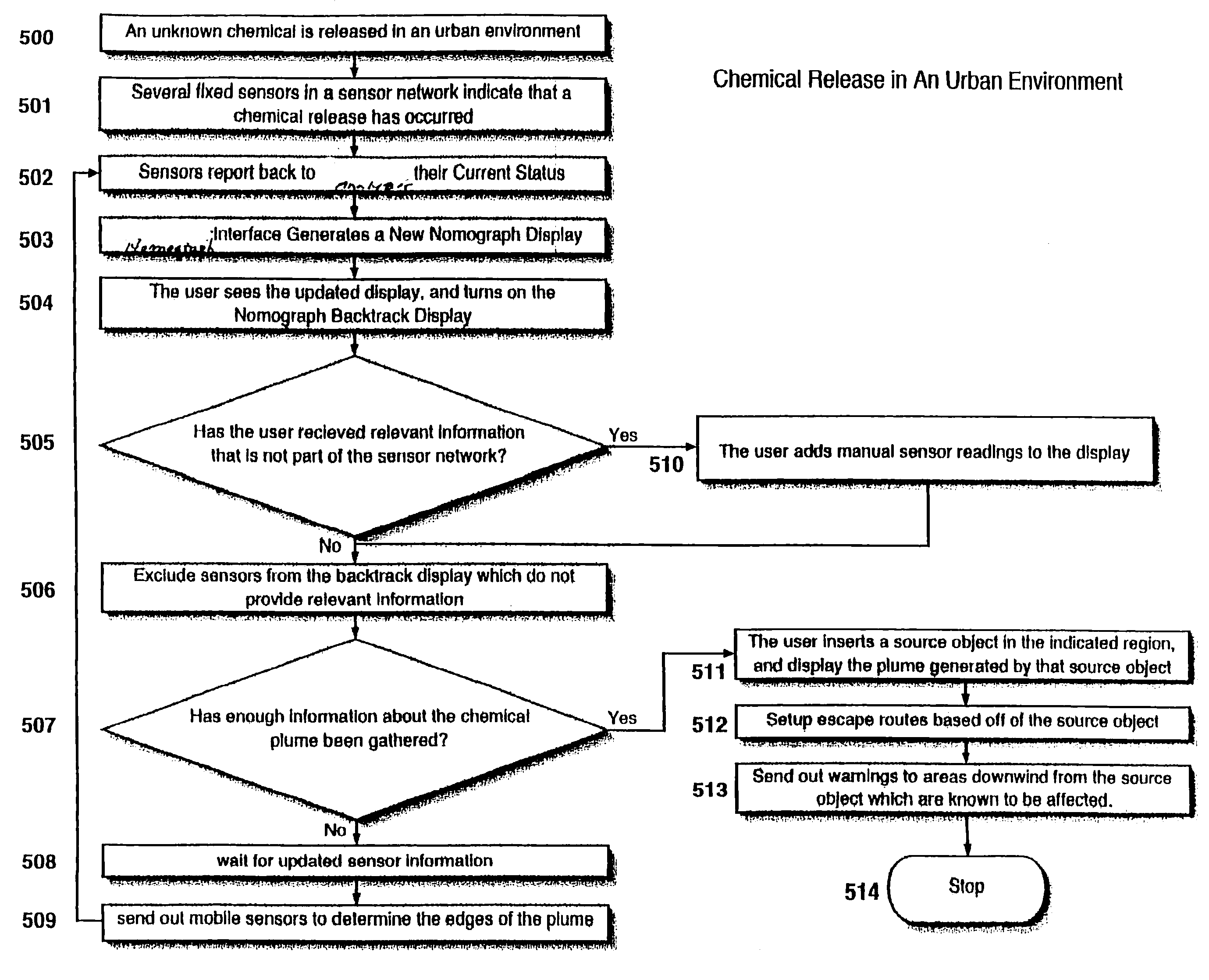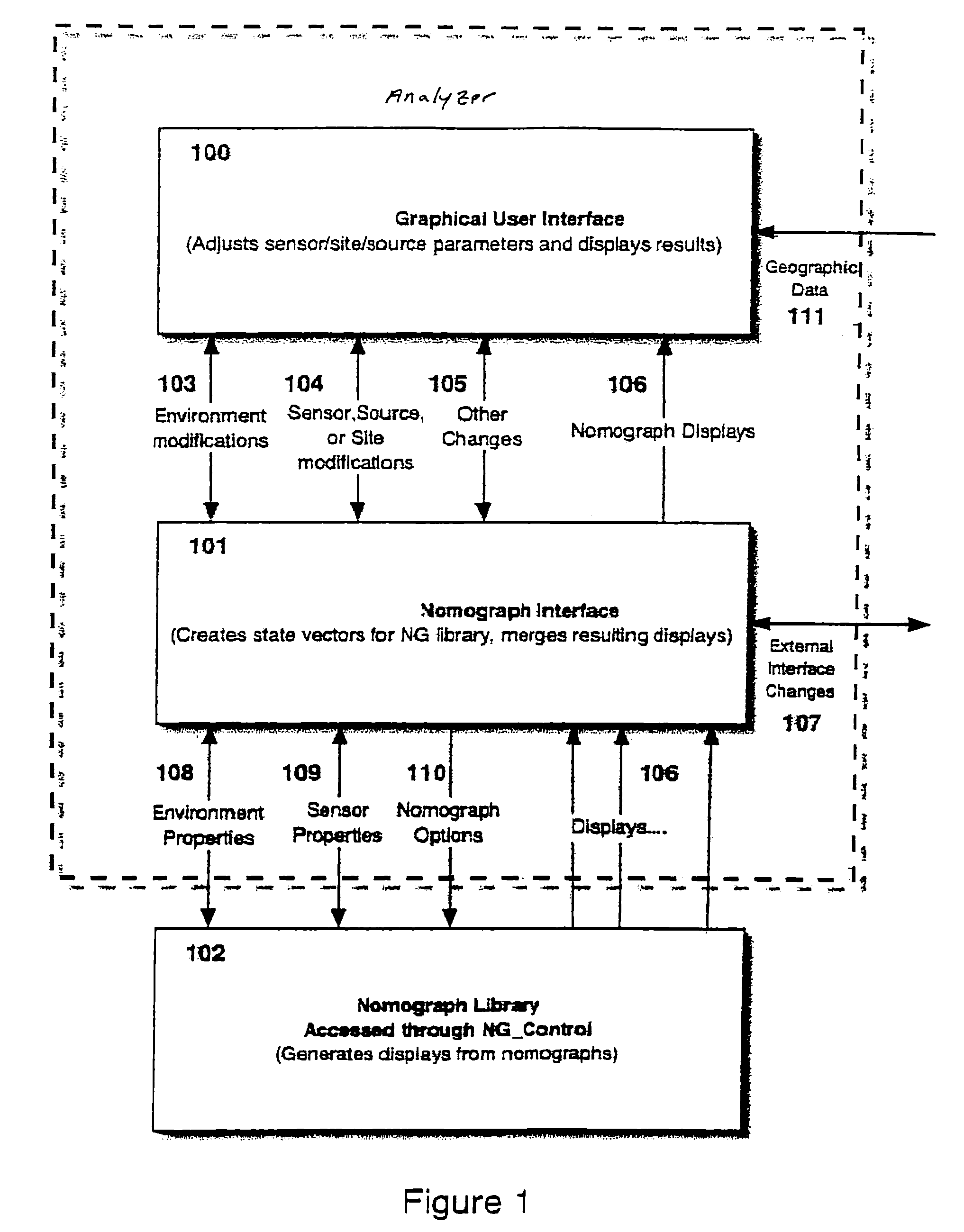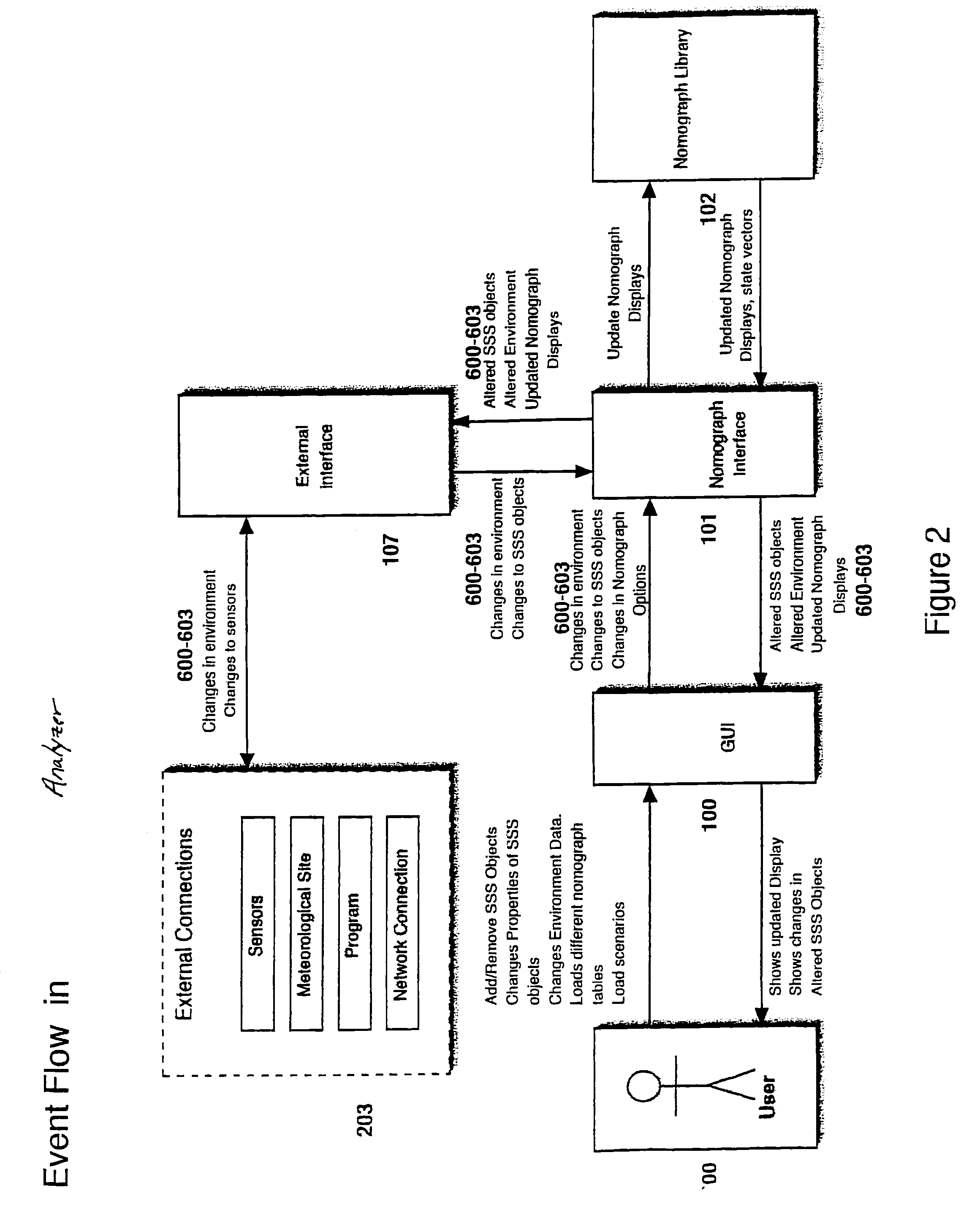System and method for zero latency, high fidelity emergency assessment of airborne chemical, biological and radiological threats by optimizing sensor placement
a sensor placement and high-fidelity technology, applied in static indicating devices, analogue processes for specific applications, instruments, etc., can solve problems such as difficulty in providing zero detection delay if point detectors, and achieve the effect of greater speed, speed and accuracy
- Summary
- Abstract
- Description
- Claims
- Application Information
AI Technical Summary
Benefits of technology
Problems solved by technology
Method used
Image
Examples
Embodiment Construction
[0039]Refer to FIG. 1 for the overall data flow of the invention. There are two main components to analyzer 1000, the Graphical User Interface (GUI) 100, and the Nomograph Interface 101. This modular configuration allows manipulation either from analyzer 1000, or an External Interface 107. This flexibility enables analyzer 1000 to be a stand-alone system or as a component of larger command and control system. This modular approach is used throughout analyzer 1000, which allows it to be flexible, robust, and easily extendable.
[0040]Nomograph Interface 101 translates from the data format used in GUI 100, and External Interface 107 to the data format used by a Nomograph Library 102. Within analyzer 1000, the properties of each sensor, source, and site (SSS) are represented as an object. An object is defined as the set of properties that comprise a sensor, source or site. The number of properties for each sensor, source, or site object may vary, depending on what type of sensor, source,...
PUM
 Login to View More
Login to View More Abstract
Description
Claims
Application Information
 Login to View More
Login to View More - R&D
- Intellectual Property
- Life Sciences
- Materials
- Tech Scout
- Unparalleled Data Quality
- Higher Quality Content
- 60% Fewer Hallucinations
Browse by: Latest US Patents, China's latest patents, Technical Efficacy Thesaurus, Application Domain, Technology Topic, Popular Technical Reports.
© 2025 PatSnap. All rights reserved.Legal|Privacy policy|Modern Slavery Act Transparency Statement|Sitemap|About US| Contact US: help@patsnap.com



